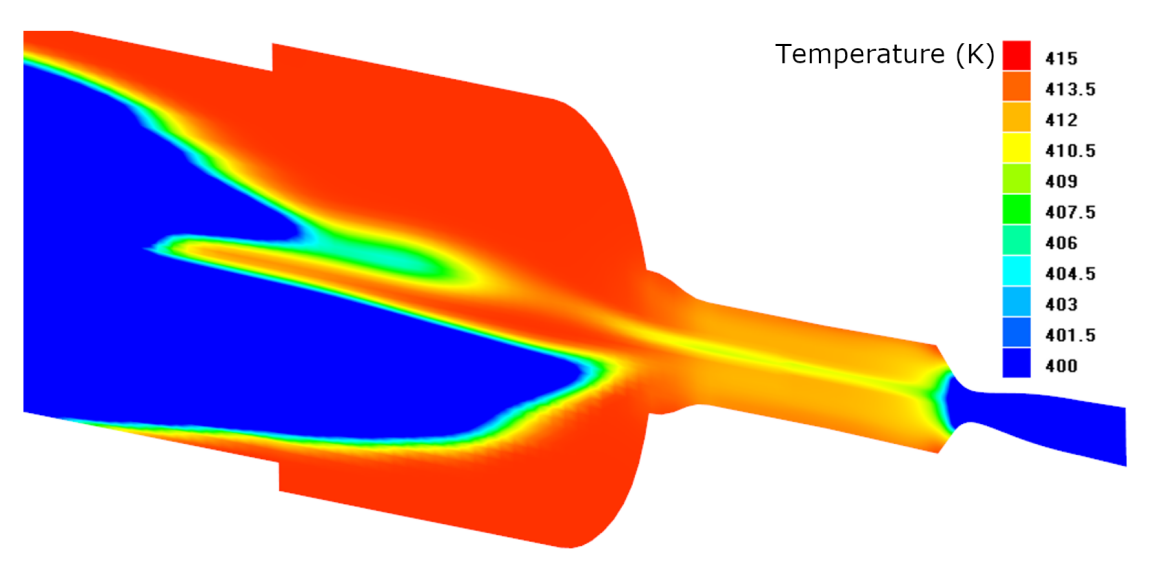The supersonic wind tunnel facility SBR-50 at the University of Notre Dame was built in 2015 for experimental research related to shock wave (SW) interactions with obstacles and boundary layers (BL) as well as supersonic combustion and a plasma-based flow control.
Currently, the facility provides the following range of flow parameters with a test section area at the nozzle exit of 76.2 × 76.2 mm: Mach number M = 2 and 4, total pressure p0 = 1–4 bar, stagnation temperature T0 = 300–775 K, and typical duration of the steady-state flow t = 0.5–2 s. One distinct feature of the facility is the Ohmic gas heater installed in a long plenum section. Objective of this study is to characterize flow in the SBR-50 facility, specifically the dynamics of the gas temperature. Two measuring methods were applied for collection of a detailed dataset: thermocouple measurements and schlieren-based thermal mark (laser spark) velocimetry. The experimental data are compared with 3D Navier–Stokes modelling of the gas parameters over the entire flowpath. Particularly, this study proves that the original facility schematics (the concept of a virtual piston in the plenum) allow for a longer operation with a constant stagnation temperature compared to a constant plenum volume with adiabatic cooling of the stored gas.
P. Andrews (1), P. Lax (1), S. Elliott (1), A. Firsov (2) and S. Leonov (1) Flow Characterization at Heated Air Supersonic Facility SBR-50 // Fluids 2022, 7, 168
(1) Department of Aerospace and Mechanical Engineering, Institute for Flow Physics and Control, University of Notre Dame, South Bend, USA
(2) Joint Institute for High Temperature RAS, Moscow, Russia
Download PDF 6,87MB
© 2022 by the authors. Licensee MDPI, Basel, Switzerland. This article is an open access article distributed under the terms and conditions of the Creative Commons Attribution (CC BY) license (https://creativecommons.org/licenses/by/4.0/).
